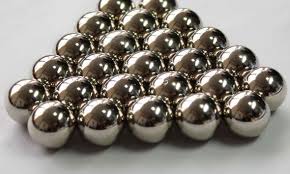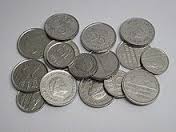| Ore |
Common Name |
Formula |
| Arsenide |
Kupternickel/Nicolite |
NiAs |
| Cholanthite |
(NiCo)As3-n |
| Sulphide |
Pentlandite |
(FeNi)9S8 |
| Millerite |
NiS |
| Antimonide |
Breithauptite |
NiSb |
Nickel is a tough silver colored metal. It is malleable and takes high polish. It is resistant to atmospheric corrosion. It is not affected by dilute acids. It has some other properties similar to iron. Articles of iron and steel are plated with nickel for protection against rusting. Nickel is a very good alloying metal. It can enter as a constituent into a large number of ferrous and non-ferrous alloys. Nickel alloys are used in making of coins. Nickel has large scale use in electroplating. It is also used in storage batteries. Nickel salts are used in chemical industries. Nickel is alloyed with iron, chromium, cobalt, manganese, tungsten, titanium, Nickel, copper, zinc and aluminium. Nickel is found in minerals in association with arsenic, cobalt, chromium, iron and sulphur. The nickel minerals are found in nickeliferous pyrrhotite, nickeliferousserpentine and mineral veins. The important mineral of nickel is Pentlandite. Pentlandite occurs in association with pyrrhotite and sulphides of copper, nickel and iron. It is found near basic igneous rocks. Sometimes silver and platinum are also found in these deposits. The major producers of nickel minerals are Canada, Australia, South Africa, Dominican Republic, Botswana, Finland, Columbia, Zimbabwe, Philippines, Brazil, U.S.A, Norway, Russia, Poland & Cuba.
Nickel deposits are oxidized in the upper part of the deposits to form hydroxides of nickel. These are called nickel blooms. These blooms are of greenish in color. Some blooms with their chemical composition are given below:
| Ore |
Name |
Formula |
| Emerald nickel |
Zaratite |
NiCO3,2Ni(OH)2,4H2O |
| Nickel vitriol |
Morenosite |
NiSO4,7H2O |
| Nickel bloom |
Anabergite |
Ni3(AsO2),8H2O |




